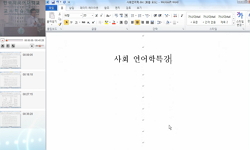Tajikistan, at the heart of Central Eurasia, had a population of 7,563,687 in 2010, estimated recently to be almost 10,084,935. Named for its majority nationality, Tajikistan has many other nationalities, most with their own language. This article exp...
http://chineseinput.net/에서 pinyin(병음)방식으로 중국어를 변환할 수 있습니다.
변환된 중국어를 복사하여 사용하시면 됩니다.
- 中文 을 입력하시려면 zhongwen을 입력하시고 space를누르시면됩니다.
- 北京 을 입력하시려면 beijing을 입력하시고 space를 누르시면 됩니다.


Towards Understanding Tajikistan’s Sociolinguistically Complex Language Ecology: Historical Development, Current Status, Issues, Research, Policy and Practice
한글로보기https://www.riss.kr/link?id=A108743507
-
저자
Bahry Stephen A. (University of Toronto, Toronto, ON, Canada) ; Olimnazarova Tojiniso (University of Alberta, Edmonton, AB, Canada; University of Central Asia, Khorog, Tajikistan)
- 발행기관
- 학술지명
- 권호사항
-
발행연도
2023
-
작성언어
English
- 주제어
-
등재정보
KCI등재,SCOPUS
-
자료형태
학술저널
-
수록면
151-165(15쪽)
- DOI식별코드
- 제공처
-
0
상세조회 -
0
다운로드
부가정보
다국어 초록 (Multilingual Abstract)
Tajikistan, at the heart of Central Eurasia, had a population of 7,563,687 in 2010, estimated recently to be almost 10,084,935. Named for its majority nationality, Tajikistan has many other nationalities, most with their own language. This article explores what is known about the historical, development and current status of multiple languages in Tajikistan’s linguistic tapestry. We provide a tentative overview of Tajikistan’s evolving language ecology from earliest times when a range of Eastern Iranian languages were dominant, to the reduced use of Eastern Iranian languages following the entry of Arabic and New Persian (a western Iranian language) into the ecology with the Arab conquest, and the subsequent entry of Turkic languages, and more recently the entry of Russian under the late Russian empire and its spread under the Soviet Union. Following independence in 1991, a shift in balance among domains of use of Tajik and Russian has been ongoing at the same time as international languages, especially English, have entered Tajikistan’s language ecology. We review the current state of knowledge about contemporary sociolinguistic dynamics, monolingualism and plurilingualism in society, where the titular language, Tajik/Persian, is in interaction with local, regional and global languages. Against the background of changing post-independence language and language-in-education policies, we discuss the prospects for monolingual, multilingual and plurilingual education in Tajikistan among efforts to promote the official language, Tajik, and to provide minority language education, while also developing proficiency in foreign languages in Tajikistan, through initiatives such as English-medium instruction.
동일학술지(권/호) 다른 논문
-
- 한양대학교 아태지역연구센터
- Zhumashov Yerkebulan
- 2023
- KCI등재,SCOPUS
-
Language situation in dynamic Eurasian region: Introducing the special issue
- 한양대학교 아태지역연구센터
- Fedorova Kapitolina
- 2023
- KCI등재,SCOPUS
-
- 한양대학교 아태지역연구센터
- 남혜현
- 2023
- KCI등재,SCOPUS
-
Iran’s Foreign Policy toward Tajikistan: Exploring the Effective Factors
- 한양대학교 아태지역연구센터
- Karimi Mahdi
- 2023
- KCI등재,SCOPUS




 KCI
KCI



